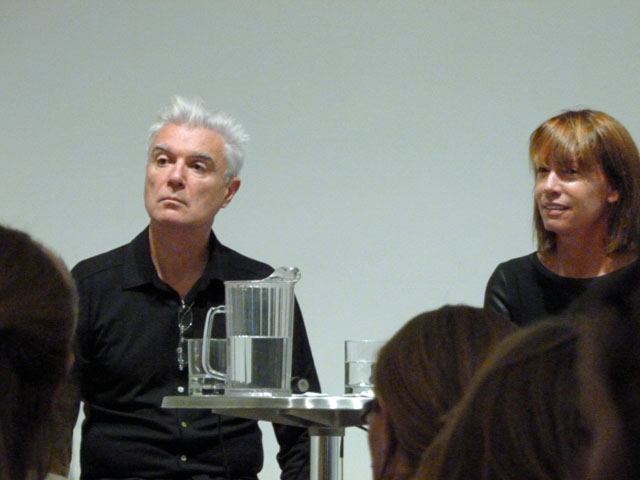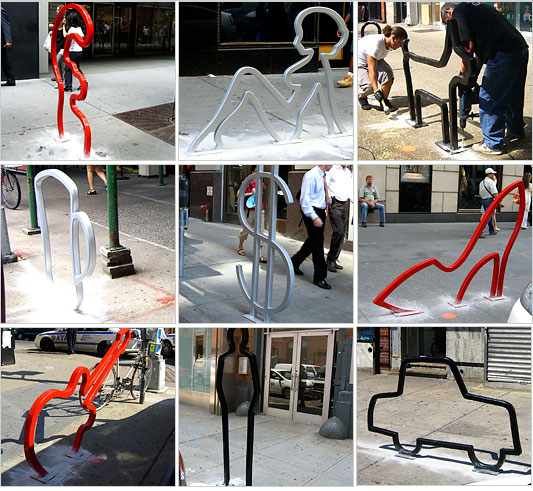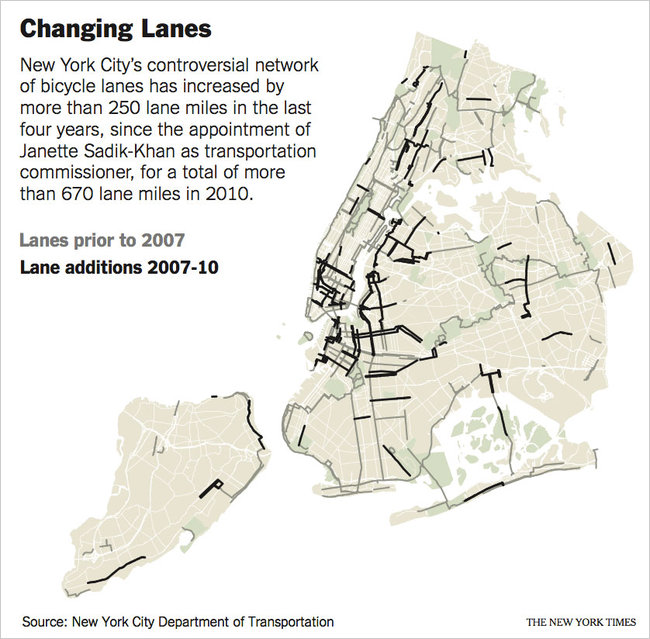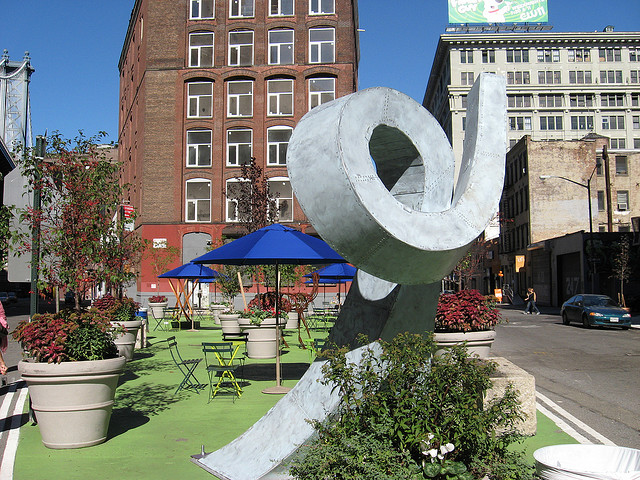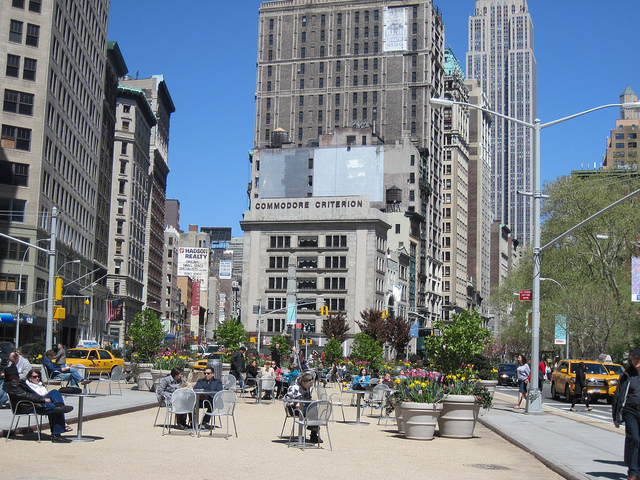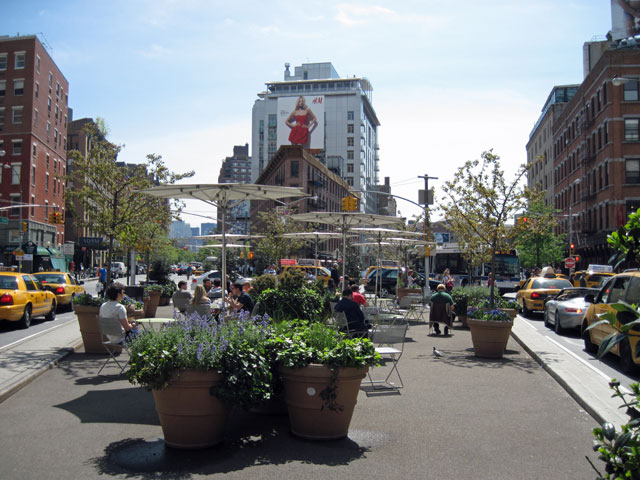Via Verde: The Bronx Continues to Rise
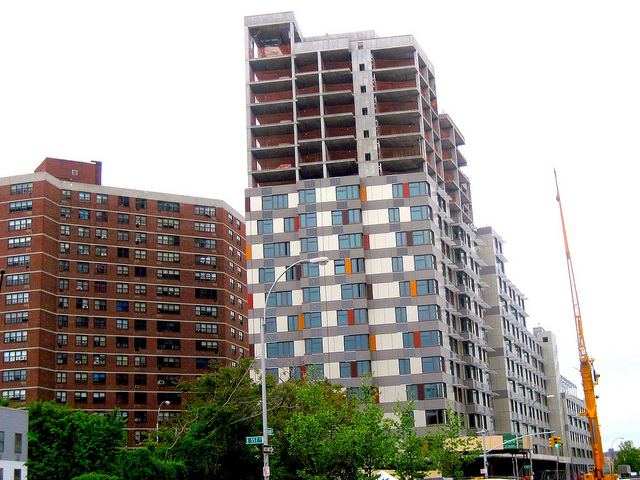 Via Verde under construction, May 2011 [Deena Parham]
Via Verde under construction, May 2011 [Deena Parham]
There are times when I am surprised to find brand new real estate developments in the most unexpected places. In May 2011, I was in the South Bronx for an event at a community garden, when I noticed the striking building across the street (above photo) under construction. I later learned that it was Via Verde (700 Brook Avenue), a much-heralded new affordable housing complex.
Fortunately, I do occasionally find myself walking on the streets of the Bronx to witness neighborhood transformation first-hand. The larger than life historical narratives that I've read about the borough's brushes with urban decay, and abandonment, are usually shattered the moment that I meet residents who are working hard to improve their communities. The truth is that large swaths of the South Bronx have long-risen from the devastation.
Yes, 2011 was a banner year for the Bronx, as several prominent projects emerged that forced the media to take notice. The borough continues to make tremendous strides in economic development. Here is a new real estate development on my radar this year:
Via Verde (“the green way”) the South Bronx
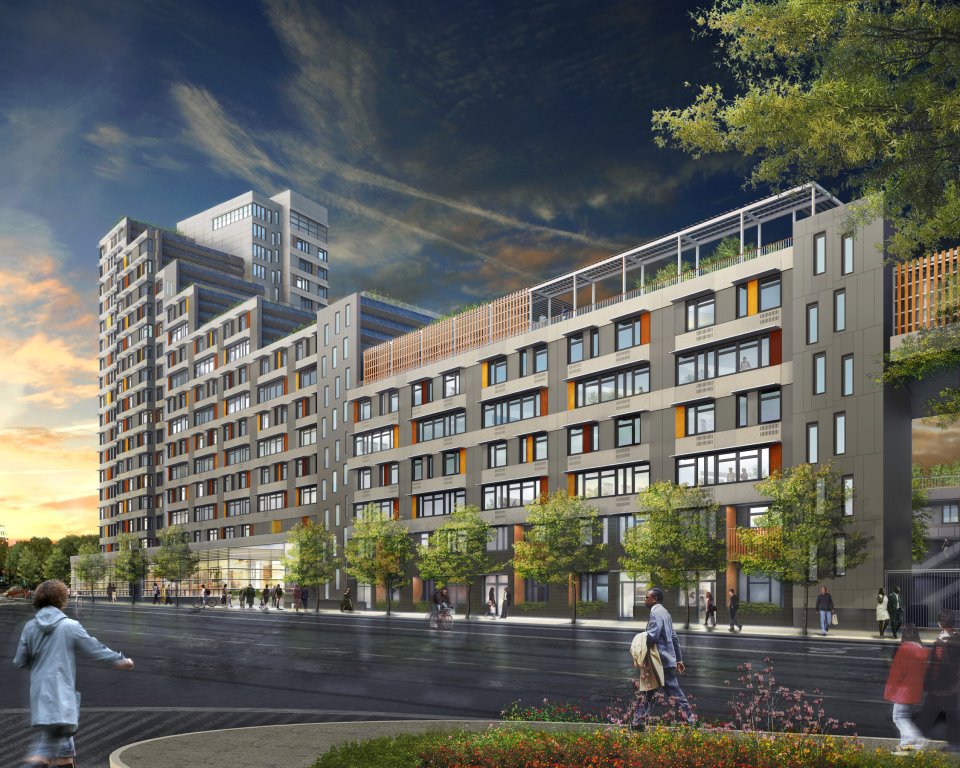 View of Via Verde from the street [Phipps, Rose, Dattner, Grimshaw]
View of Via Verde from the street [Phipps, Rose, Dattner, Grimshaw]
In September 2011, Michael Kimmelman, the new architecture critic at the New York Times, visited Via Verde, a new housing development in the South Bronx. His first review brought considerable attention to the affordable housing complex. The innovative environmentally “green” building, starts at three-story townhomes, gradually rising to a 20-story tower, and offers 151 rental and 71 co-op apartments to mixed-income families. Phipps Houses and Jonathan Rose Companies developed it with Dattner Architects and Grimshaw.
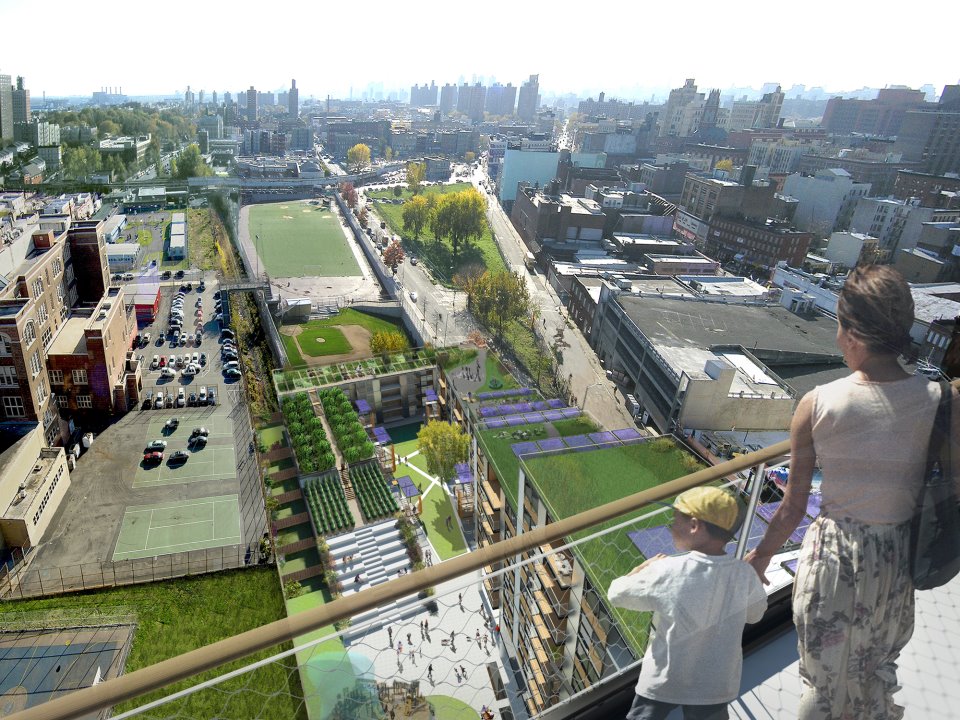 Looking South from the Rooftop Garden [Phipps, Rose, Dattner, Grimshaw]
Looking South from the Rooftop Garden [Phipps, Rose, Dattner, Grimshaw]
The building incorporates elements of nature, which includes a 40,000 square foot roof deck that will be used to plant fruit trees, and will have garden plots for tenants to plant their own gardens. Via Verde is designed to achieve LEED Gold certification from the U.S. Green Building Council, for its innovative environmentally responsible design. It also promotes physical activity, by placing staircases in prominent locations, to discourage residents from using the elevators, whenever possible.
 The 20-story rental apartment tower [Phipps, Rose, Dattner, Grimshaw]
The 20-story rental apartment tower [Phipps, Rose, Dattner, Grimshaw]
What was most noteworthy about the New York Times article was the praise for Via Verde’s design. Over the years affordable housing developments have rarely garnered accolades. Michael Kimmelman said:
The rebirth of the South Bronx isn’t news. But Via Verde is. And it makes as good an argument as any new building in the city for the cultural and civic value of architecture. The profession, or in any case much talk about it, has been fixated for too long on brand-name luxury objects and buildings as sculptures instead of attending to the richer, broader, more urgent vein of public policy and community engagement, in which aesthetics play a part.
Via Verde helps shift the conversation. Like all good architecture, it is handsome. Unlike too much, it goes out of its way to be healthy. It evolved out of a competition five years ago, organized by Shaun Donovan, then commissioner of the city’s Department of Housing Preservation and Development, now President Obama’s secretary of housing and urban development. The idea was to spur developers to team with architects in combining the latest green concepts with high-quality architecture for a public-housing project, a “beacon,” as Mr. Donovan put it to me the other day, that would “re-engage design with the issue of affordable housing.”
Occupancy is expected in March of 2012.
More information
- The New York Times: Via Verde in the South Bronx Rewrites Low-Income Housing Rules
 Deena Parham | Comments Off |
Deena Parham | Comments Off |  NYC,
NYC,  The Bronx,
The Bronx,  Via Verde in
Via Verde in  New York,
New York,  Nonprofit,
Nonprofit,  Real Estate,
Real Estate,  Urban Planning
Urban Planning 